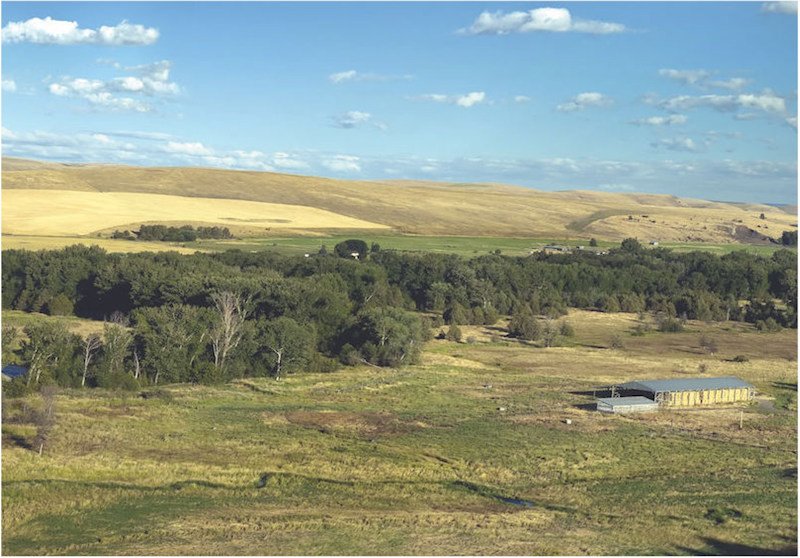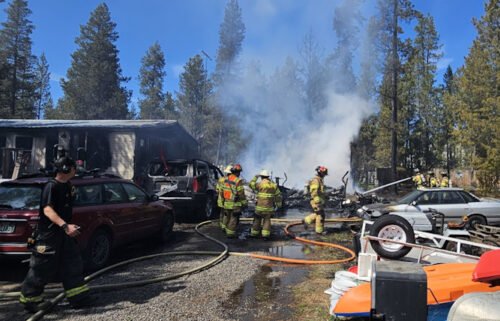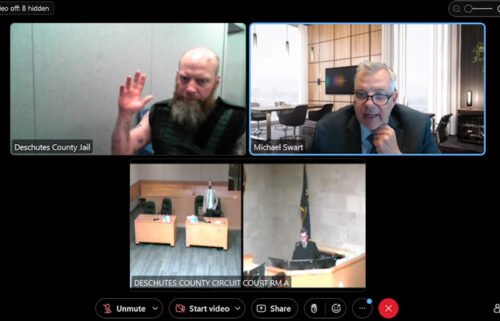Farmers, ranchers praise lawmakers for funding programs to keep working lands in use

PORTLAND, Ore. (KTVZ) -- A coalition of farmers, ranchers and conservation advocates praised the Oregon Legislature Friday for approving $5 million for the Oregon Agricultural Heritage Program – the first appropriation to the program since it was signed into law in 2017.
The new funding will enable working landowners like farmers and ranchers to now access not only the newly appropriated $5 million in state funds, but also millions in similar federal funds intended to keep working lands working.
Currently, most of the federal funds dedicated to agricultural preservation are going to other states; Oregon has received only 0.4% of these funds because the state did not have a matching program.
"For over 20 years, I've worked within Oregon's land-use system to promote wise development and protect farmland and open spaces. Despite the strength of that system, we continue to lose farmland across the state. The Oregon Agricultural Heritage Program will help reverse the trend, support local economies, and conserve wildlife habitat and water quality," said Rep. Ken Helm (D-Washington County).
“Many of our farmers and ranchers are approaching retirement and looking to pass on their operations to the next generation. This fund will help ensure Oregon’s farmlands stay in production, supporting clean air, clean water, wildlife habitat, rural economies, and our Oregon way of life,” said Rep. Mark Owens (R-Baker, Grant, Harney and Malheur counties).
According to research from Oregon State University, nearly two-thirds (10.45 million acres) of Oregon’s agricultural lands will change hands in the next 20 years due largely to intergenerational transfer. “It’s important we keep Oregon’s working lands working,” Owens added.
OAHP includes four grant programs:
- Working Land Easements: Compensating farmers and ranchers for voluntarily protecting their land and its natural resource values. Landowners are compensated for the monetary value of the development rights and the land remains in production.
- Conservation Management Plans: Compensating landowners for implementing practices that conserve soil and water and enhance existing habitat.
- Succession Planning: Helping landowners pass their land onto the next generation.
- Technical Assistance: Supporting non-state organizations to implement the grant programs.
A diverse coalition of agricultural and conservation groups championed OAHP and the effort to fund it.
In the U.S. Department of Agriculture’s most recent ag census, data showed that:
- Oregon lost 340,000 acres of farmland from 2012-2017, more than three times the number of acres lost from 2007-2012 (98,000 acres). This area is significantly larger than the entire Portland Metro Area and greater than all of Oregon’s 10 largest cities put together.
- Since 1997, Oregon lost nearly 10% of its farmland (9.6%).
- The number of mid-size and large farms (between 50 to 1,999 acres) continued to decrease, a consistent 20-year trend.
The next ag census, measuring years 2018-2022, is expected to be published in 2024.
“The amount of farmland lost in Oregon keeps growing. It’s a disturbing trend. We are grateful to the legislature for stepping up to help farmers save their farms,” said Kelley Beamer, executive director of the Coalition of Oregon Land Trusts.
History of the Oregon Agricultural Heritage Program (OAHP)
Governor Brown signed a bipartisan bill authorizing creation of OAHP in September 2017. OAHP offers a suite of voluntary tools including grants for permanent working lands conservation easements and 20- to 50-year covenants, and succession and conservation management planning.



